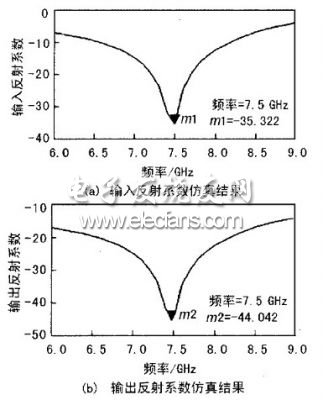introduction
In a communication system, an important indicator of communication quality is the signal-to-noise ratio, and the key to improving the signal-to-noise ratio is to reduce the noise figure of the receiver. In a receiver system with a low-noise amplifier, the noise figure of the whole machine will be greatly reduced, thus greatly improving the sensitivity. Therefore, low noise amplifiers are very important components in the receiver system.
1 Circuit simulation design
The microwave low-noise amplifier of this project uses microwave low-noise field effect tubes to amplify in the microwave frequency band. It is particularly important to note that because the FETs have internal feedback, when the amount of feedback reaches a certain intensity, it will cause the amplifier stability to deteriorate and cause self-excitation. To improve the stability of the microwave tube itself, the series resistance is negative. In the feedback method, an impedance circuit is connected in series between the source of the field effect tube and ground to form a negative feedback circuit. In the actual microwave amplifier circuit, the feedback element is usually replaced by a microstrip line, which is equivalent to negative feedback of the inductive element, which improves the stability of the circuit.
1. 1 Determine the circuit form
Noise figure is one of the important technical indicators of low noise amplifiers. Low noise figure and low input standing wave are a pair of contradictions in the design of low noise amplifiers. The design of the low-noise amplifier of this project abandons the method of using input plus isolator for the realization of low input standing wave, and uses a negative feedback amplifier circuit. The negative feedback amplifier circuit has the characteristics of wide frequency band response, small input and output standing wave and good stability.
Using the PHEMT chip and applying a hybrid integrated process for design, it achieves low noise figure and low standing wave characteristics over a wide frequency band.
The selection of the device is directly related to the quality of the performance index. The most critical device for a broadband low-noise amplifier is the basis of the amplifier-the GaAs PHEMT chip. In order to meet the high gain index, GaAs PHEMT should have the highest possible transconductance; at the same time, in order to meet the low noise figure, GaAs PHEMT's own noise figure should be as low as possible. To reduce the volume at the same time, GaAs PHEMT chose to use a die.
In order to balance noise and gain, this project uses 2-stage amplification. The design of the first stage amplifier must be the best noise design, that is, the input matching network must be the best noise matching network, and it is not necessary to pursue the maximum gain; the second stage amplifier guarantees the output power and the total gain.
1. 2 Simulation design of the first stage amplifier
After selecting the first level of the project to use Fujits' FHX13X, its noise characteristics are relatively good, and two field effect tubes are used for parallel amplification design. The advantage of the parallel amplifier is its low noise characteristics, and easy to match. In order to improve stability, an RLC resonant circuit is connected in series between the two sources and ground of the first-stage amplifier, and negative feedback is added, and a feedback circuit of RL series is added between the gate and the drain, so that although the gain will be reduced, Increase the noise, but it will greatly improve the stability of the circuit, the flatness of gain, the realization of broadband, and the input-output standing wave ratio.
The result of simulation using software is shown in Figure 1.

Figure 1 Simulation results of input and output reflection coefficients
As shown in Figure 1, the input and output impedances are perfectly matched, and the input and output reflection coefficients are less than -15 dB in the 7 ~ 8 GHz frequency band. At the center point of the match, 7. 5 GHz, it reaches-35. 322 And-44. 042, it can be said that the match is quite good.
Drum type Rice Cooker
Features
This type rice cooker is famous with drum type appearance, which is easy operation and easy clean.
There are two type of inner pot , one type called white pot which is without non-stick but cheaper price .another one called non-stick pot is polished with emery, Also there are two type non-stick with different price ,it`s depending on different demands to use.
And the inner pot cannot be burned on the stove, which will make the pot transfigured and bad contact with the heating plate. While cooking , the heating plate or the fuse is most likely to be burned for the bad contact of the inner pot and the heating plate, Besides, make sure to dry the pot before putting into the outer shell of the rice cooker ,or else the drops of water flowing on the heating plate, will make the heating plate rusted.
Applications
Many peoples are used drum type rice cooker for congee and soup, some of peoples are prefer to use this type rice cooker for steaming.
Drum Rice Cooker,Drum Shape Rice Cooker,Electric Drum Rice Cooker,Multifunctional Drum Rice Cooker
Guangzhou Taipeng Electrical Appliances Technology CO., LTD. , https://www.kettles.pl